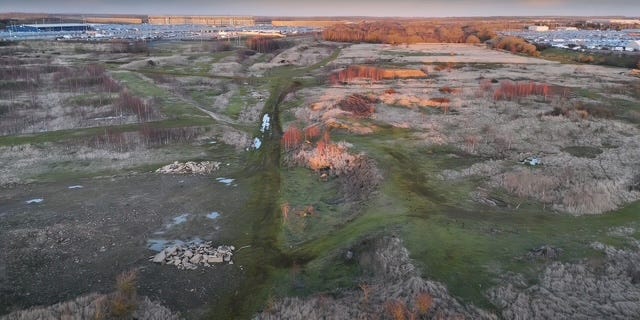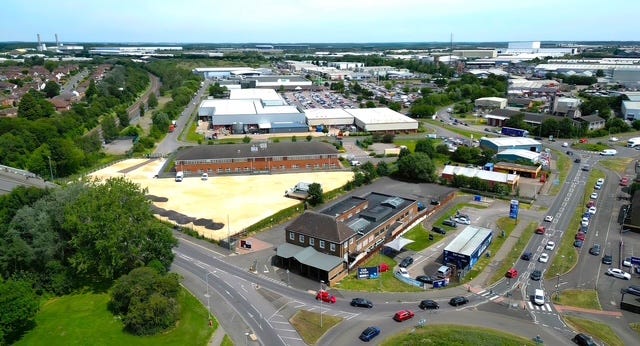Hospital admissions data could reveal whether there is more childhood cancer in Corby
The authority's public health team has responded to worried families' calls to investigate whether there is a higher incidence of childhood cancer in the town
By Sarah Ward

Concerns about Corby’s recent childhood cancer rates are being analysed by North Northamptonshire Council (NNC) using hospital admission rates.
The authority’s public health team led by director Jane Bethea, is currently going through data they have received from NHS Hospital Episodes Statistics, specifically looking at admissions for Corby children aged between 0 and 19 between 2014 and last year.
The investigation comes after a group of parents (in the wake of Netflix series Toxic Town) contacted the authority with fears their own child’s illnesses could have been linked to toxic waste in the town.
After the closure of the steelworks, the chemical by-products of the industrial steelmaking were removed from toxic ponds scattered across the steel site and moved into a quarry that was later reclaimed to build Rockingham Motor Speedway.
A 2009 court case was successful in winning compensation for a number of local families whose children’s birth defects had been caused by the hazardous waste, which one expert said hung over parts of the town as a ‘toxic soup’.
NNC, which replaced the former Corby Borough Council in 2021, has put out a statement in recent days which says:
“North Northamptonshire Council has been approached by a group of residents requesting information about the number of childhood cancer cases recorded for children living in Corby. They are interested in whether there are high rates of childhood cancer in Corby, and whether there are any areas within Corby that have particularly high rates.
The data that is needed to answer this question is collected by the NHS, and as a Public Health service we can request access to that data. The data itself is called Hospital Episodes Statistics, and it allows us to look at small areas of one to three thousand residents. These areas are called Local Super Output Areas (LSOAs).
We have asked for data at this level for any cancer in a child aged 0-19 years and we have asked for that for all of the North Northamptonshire Council area. This will mean we can compare Corby and areas within Corby to the rest of North Northamptonshire. The NHS data can only be provided for up to a 10-year period, and so the analysis will cover any cancer in a child that was recorded between 2014 and 2024.
The data we receive is for hospital episodes and not for individual children and so we have had to carefully go through that data to identify and report individual cases. This is important as some children may have many hospital visits linked to their diagnosis and treatment, and some may have fewer. By identifying individual children, we get a clearer picture of the number of cases of cancer.
This process of verifying the data does take some time and it is also important that we check the data with our NHS partners to make sure we don’t miss any cases or count any more than once in error. If the data is not correct, then the findings of the analysis could be misleading.
At the same time, we are also working with colleagues at the National Cancer Registry to see what other data could be made available to us, because this both helps us check that our analysis of the Hospital Episode Statistics is accurate, and helps us identify if there are other ways of identifying any clusters of cancer cases, should they exist.
When we have checked all the data, we will map the findings and look at whether there are any significant variations. We will then share our findings initially with the residents who asked for this work to be done, and then we will share them publicly.
We are at the stage of checking and verifying the data with our partners to make sure it is accurate and has captured all the individual cases of childhood cancer. It is very important that this aspect of the work is done correctly, and we will be very rigorous in that process. It is also important to note that although this analysis will help to highlight any areas of variation in rates of childhood cancer, it will not identify the cause of any variation.”
“North Northamptonshire Council acknowledges the devastating impact that childhood cancer has on children, their families and the local community. We are committed to doing all we can to respond to concerns raised by our residents.”
Alison Gaffney, who is leading a group of families affected by childhood cancers, says the analysis is a first step.
Her own son Fraser was born in 2016 and diagnosed with leukaemia in 2018, undergoing a stemcell transplant.
She said:
“We are just hoping the council will release the results as soon as possible. We were also hoping we could look at the data ourselves before the council analysed it, but that has not been possible.
“We are disappointed that only data from the past ten years is being looked at and we hope that families whose children were born before then do not feel too deflated.”
There are families coming forward who think their cancer experienced in the 1990s through to the 2000s could have been caused by the toxic waste. Niamh Haggerty was born in 1998 with a rare retinablastoma, which caused the loss of one eye, and at the weekend, Gillian Corner, spoke to the Sunday Times about her own childhood cancer in the 1990s.
After her cancer was treated, her son Lewis was born with a deformed limb in 2008.
Alison Gaffney says 50 families have filled in her questionnaire and anecdotally there are upwards of 100 families affected.
NN Journal contacted NHS England which said the data for hospital admissions goes back to 1998.


